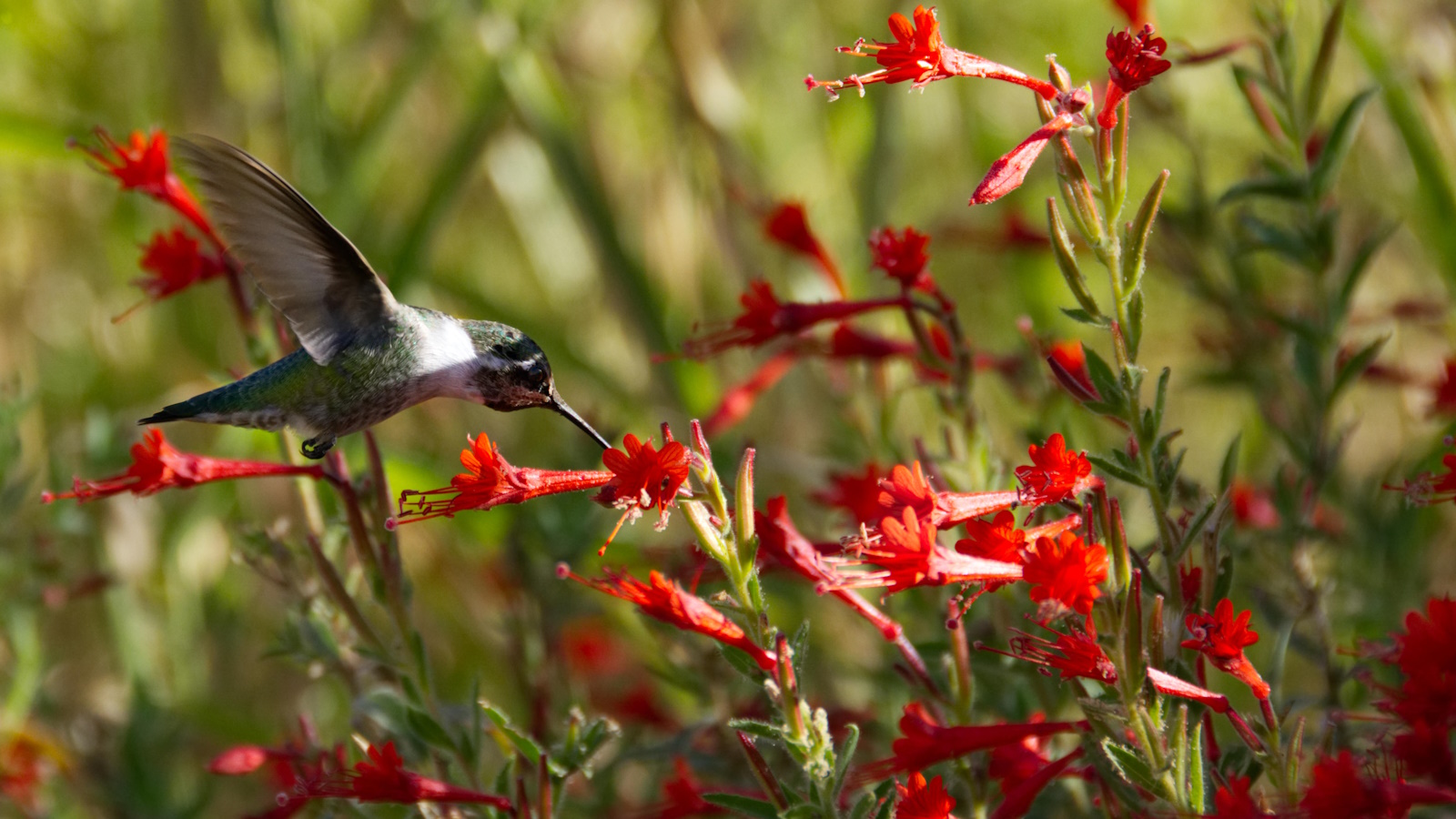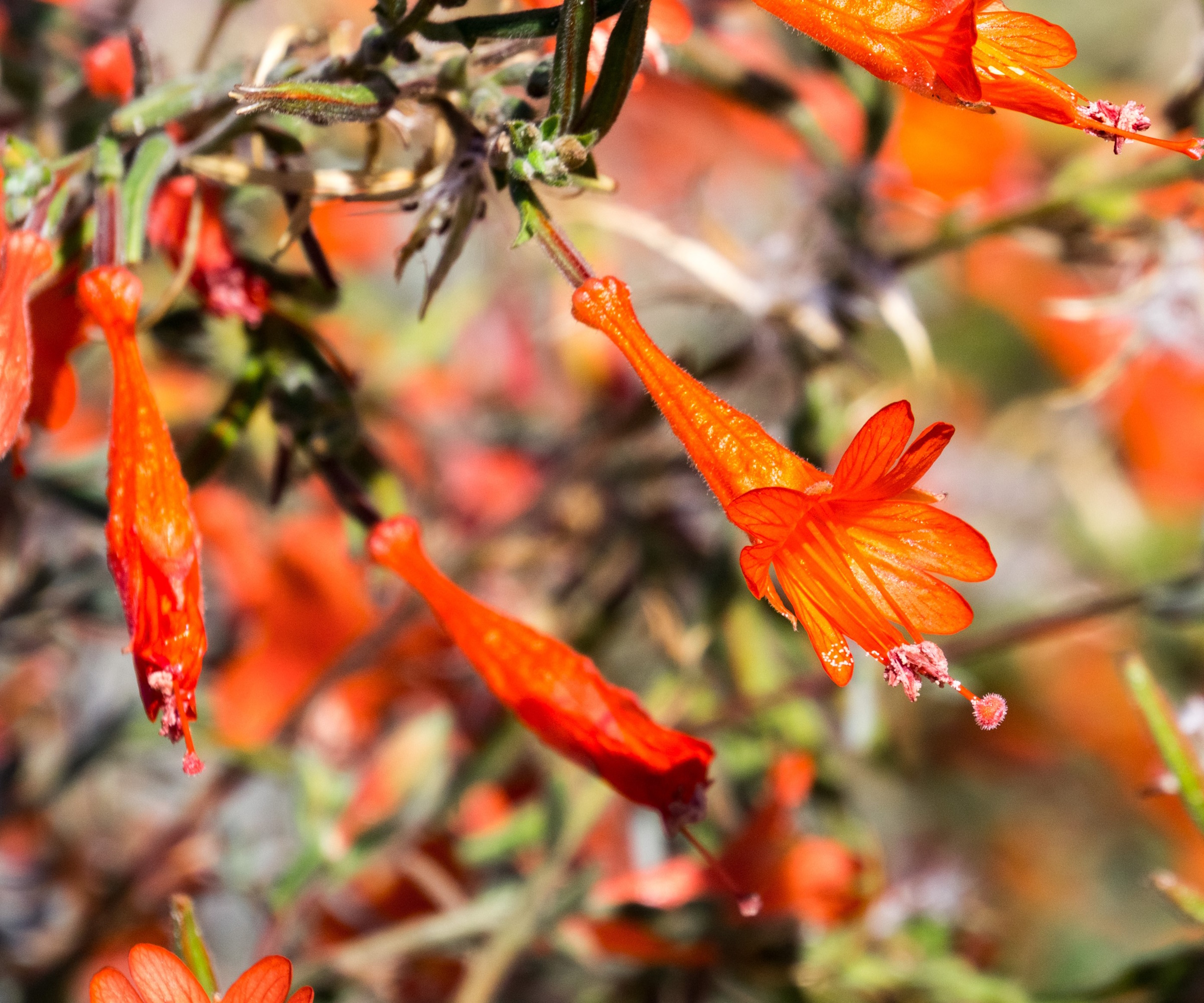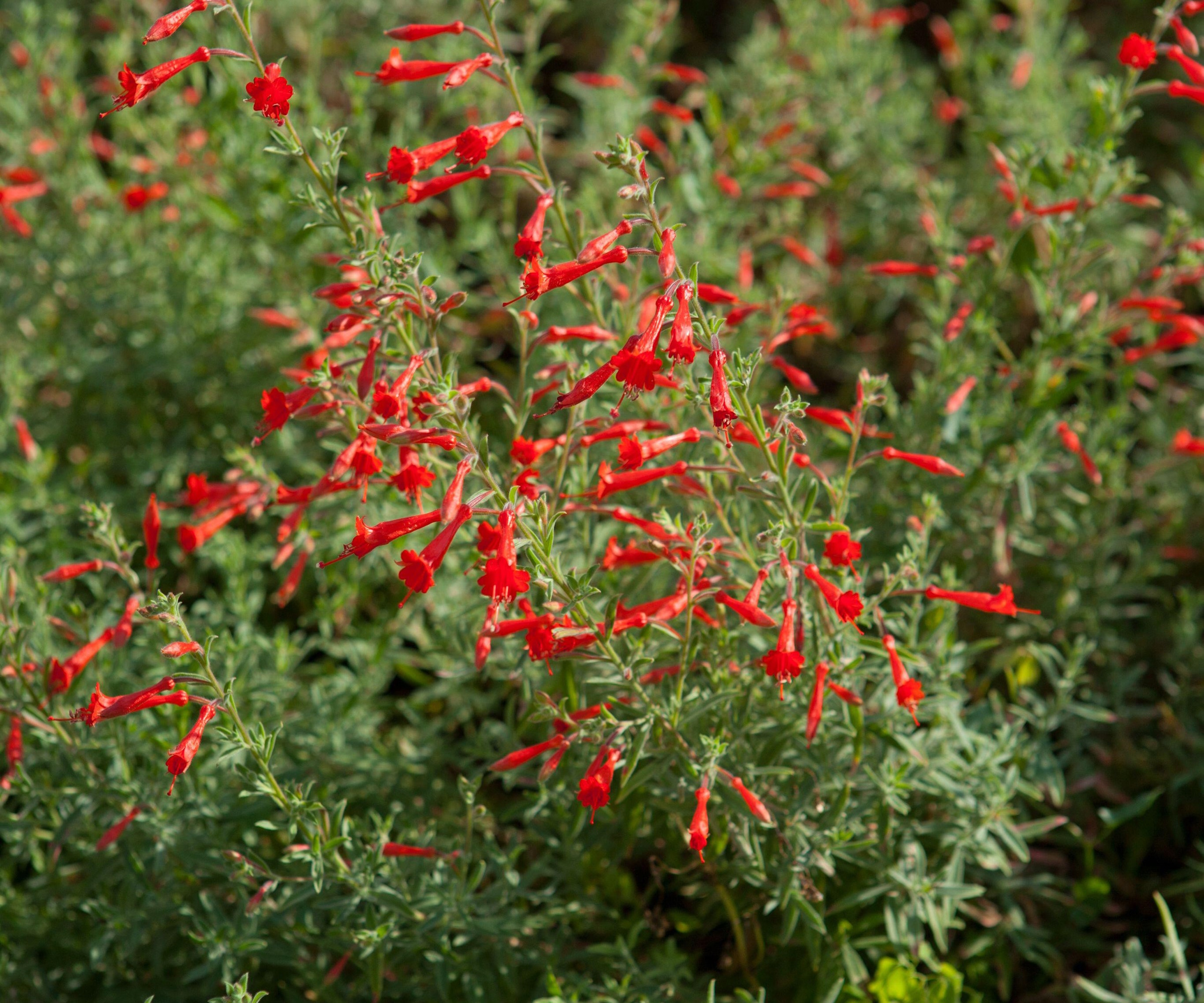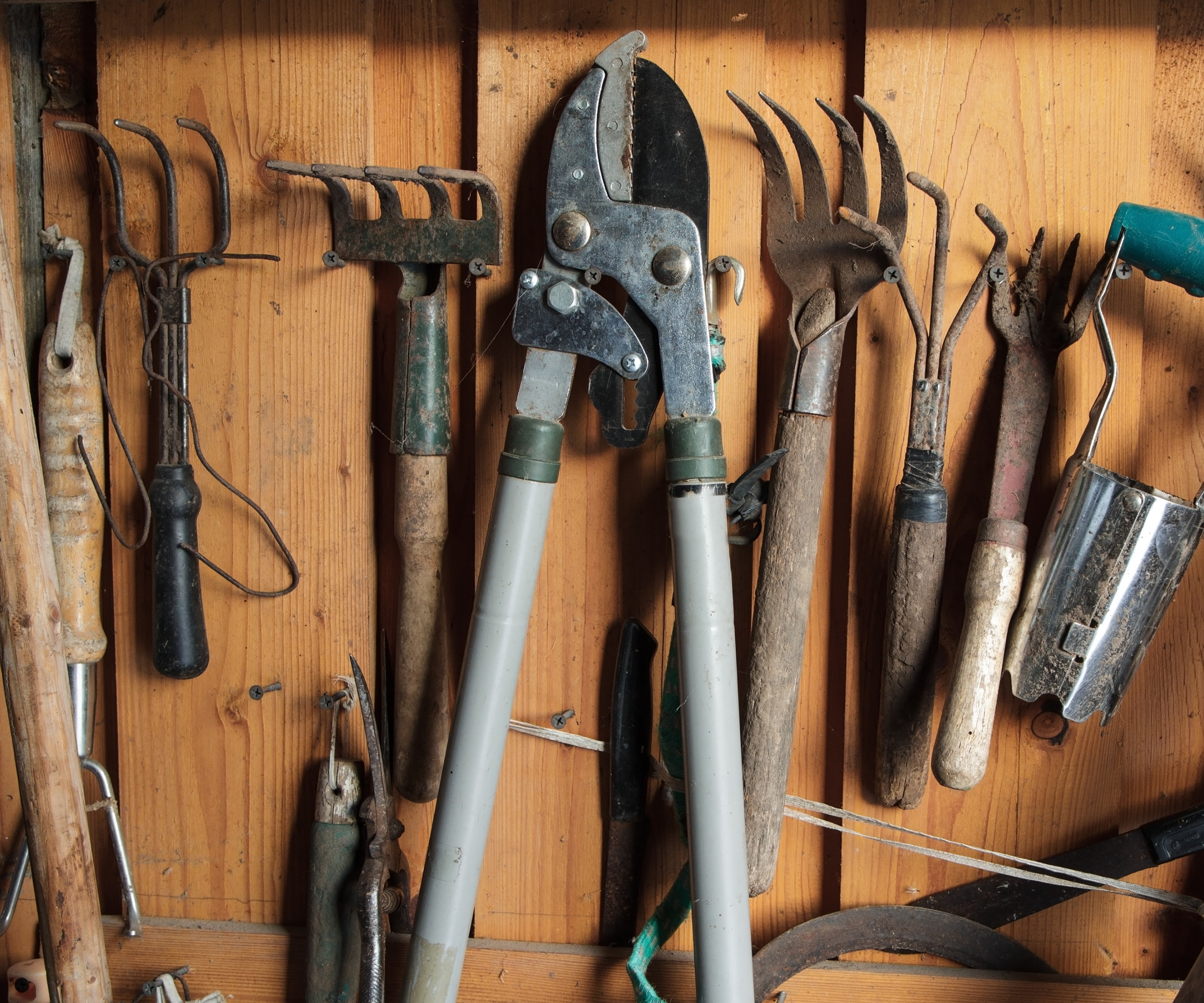
If you're looking to add a vibrant splash of color to your borders that will attract plenty of pollinators, then learning how to grow hummingbird trumpet plants is a great option to consider. Prized for producing masses of orange-red blooms, this plant is a magnet for hummingbirds who can easily access the nectar that is found deep within the flowers, all thanks to their long, thin beaks.
Native to the western United States, the hummingbird trumpet plant, Epilobium canum, is found growing in Oregon, New Mexico and California (it is also known by another name, the California fuchsia). Growing happily in warm regions, this plant is remarkably low-maintenance, thriving in sunny spots and dry soils.
As a vigorous, low-growing perennial, reaching no more than 15 to 20 inches in height, the hummingbird trumpet plant can be used as a drought-tolerant ground cover. While less known than some other ground cover options, this unusual plant would add something unique to any dry, sunny yard. Here, our comprehensive growing guide has all the information you need to master growing hummingbird trumpet plants this year.

How to grow hummingbird trumpet plants
Hummingbird trumpet plants are long-flowering perennials, typically blooming from summer until fall. Part of the evening primrose plant family, Onagraceae, this plant is renowned for its resilience, thriving in poor soils, with little water and tolerating searing temperatures. Tough and beautiful - what more could you ask for?
Key information about hummingbird trumpet plants

'The hummingbird trumpet plant is a vigorous native plant that will bloom all through summer, producing masses of zingy orange flowers,' says Rachel Bull, Head of Gardens at Homes & Gardens.
'It is low-growing, forming dense carpets or mats wherever planted, so it is a good option for those seeking ground cover plants,' Rachel adds. 'Whether you are looking to line a pathway or fill a large, sun-soaked area of the yard, hummingbird trumpet plants will be a tough and tolerant option.'
Native to California, these plants grow best from US hardiness zone 8 and above, preferring sunny summers and mild winters. In cooler regions, positioning these plants in sheltered corners is a good idea.
'What's more, these plants are some of the best perennials if you are seeking wildlife garden ideas or looking to attract hummingbirds to your plot,' Rachel says. 'And it is not just these miniature but mighty birds that will come flocking, but bees and butterflies too, all drawn to the nectar-rich offerings inside these tubular blooms.'
Consider planting alongside other pollinator-friendly native plants, such as hummingbird mint, available from Walmart, with striking purple flower spikes that will contrast nicely against the orange blooms.
Grow guide for hummingbird trumpet plants

- Soil: 'Hummingbird trumpet plants prefer free-draining, dry soil,' says Rachel. 'While famously low-maintenance, these plants will struggle in waterlogged borders.' For this reason, it is a good idea to incorporate some horticultural grit or vermiculite, available from Walmart, which will help to improve drainage in your pots or yard. 'They will tolerate poor soils, so can work well in rock gardens, dry borders, or even cascading over walls,' Rachel adds.
- Light: For the best results, grow this plant in full sun. Hummingbird trumpet plants are native to the western United States and northern Mexico, so be sure to position in a sunny spot, particularly if you live in a cooler region.
- Watering: As drought-tolerant plants, they do not tend to need watering once they are established in borders. In the first year, however, it is a good idea to monitor your hummingbird trumpet plants and water at least once per week during the warmer months of the year. For those living in southern US hardiness zones, this could mean watering two or three times per week when the temperatures rise, at least until your plants are established by year two.
- Fertilizing: It is not necessary to fertilize hummingbird trumpet plants. They can survive in nutrient-poor soils without any supplementary fertilizing.
- Pruning: Pruning will not be a regular or annual job for hummingbird trumpet plants. As low-growing plants, they will generally keep a compact, bushy form. If you do need to prune, cut back to the base in the spring after the risk of frost has passed. As a vigorous plant, they will quickly reshoot and grow.
Why not try growing hummingbird trumpet plants from seed? Propagating your own plants is a cost-effective and fun way to grow more of the plants you love.
FAQs
Are hummingbird trumpet plants evergreen?
While mostly treated as a perennial plant, some varieties of hummingbird trumpet plants can exhibit evergreen or semi-evergreen tendencies when grown in sheltered, sunny spots. If you enjoy mild winters, your plant may hold on to much of its foliage year-round, although for the majority of us living and gardening in cooler, northern zones, it should be thought of as a perennial.
Can I grow hummingbird trumpet plants in pots?
Yes, this plant can be grown in containers. As a drought-tolerant plant, it will be able to tolerate dry and hot summers, but remember to give your pot plants a deep watering every few days during the high heat of summer. Growing in pots is a good idea if you reside in a cooler region, as you will easily be able to protect your container during the winter, either using horticultural fleece or by placing the pot in a greenhouse or garden shed.
Hummingbird trumpet plants can quickly form dense, sprawling carpets in sunny yards. Do not be afraid to use your garden fork or spade to limit the spread and reduce the growth of your plant every few years, which can be done during springtime.
Incorporating perennials, shrubs and trees that are known to be popular with pollinators is a great idea for anyone looking to support wildlife and bolster their local ecosystem. During the hummingbird migration, which takes place in spring and fall every year, your nectar-rich plants will be an attractive snack for avian visitors. Consider investing in a hummingbird feeder camera if you are keen to take some high-resolution images and close-up shots of these small but spectacular birds as they pass over your state.







